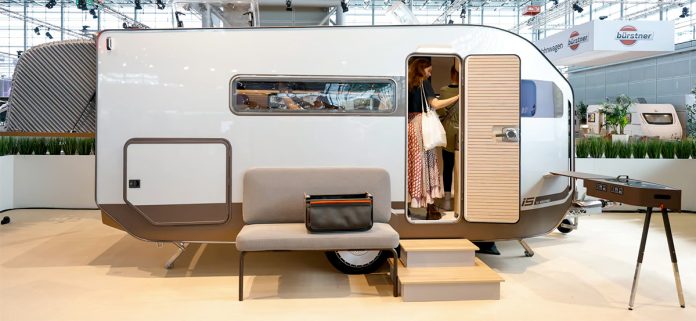Germany’s Erwin Hymer Group, well-known for its innovative designs in the recreational vehicle (RV) industry, continues to push boundaries with its latest creation, the Bürstner Talis concept trailer. Debuting at the 2024 Düsseldorf Caravan Salon, the world’s largest RV show, the Talis concept trailer showcases an inflatable rear extension and a highly flexible, adaptable interior. With its forward-thinking design and multi-functional spaces, the Talis is a glimpse into the future of compact, eco-friendly RV living.
A design inspired by nature and technology
Bürstner, in collaboration with StudioSyn, took a unique approach to designing the Talis, drawing inspiration from marine life and leveraging advanced aerodynamics. The team utilized virtual wind tunnel software to fine-tune the trailer’s form, resulting in a fish-like shape that tapers at both the front and rear. This sleek design helps reduce drag and improves fuel efficiency, a crucial consideration for modern campers, especially as electric vehicles (EVs) become more popular for towing.
While Bürstner does not make bold claims about setting records, its aerodynamic focus mirrors efforts like Polydrop’s P21 trailer, which boasts being the most energy-efficient RV globally. However, the Talis strikes a balance between maintaining a streamlined shape and offering ample interior living space, a compromise that makes it a practical option for families seeking comfort on the road.
The Air-Xtension: More space when you need it
One of the standout features of the Talis is its inflatable rear extension, referred to as the “Air-Xtension.” This innovative addition transforms the sleeping area from a compact transverse bed to a more spacious 79 x 67-inch (200 x 170 cm) longitudinal bed. By using inflatable construction, Bürstner maximizes space without adding unnecessary weight or compromising the trailer’s aerodynamics. This feature adds versatility, especially for families, as the larger bed can comfortably accommodate children during nighttime or when extra space is needed.
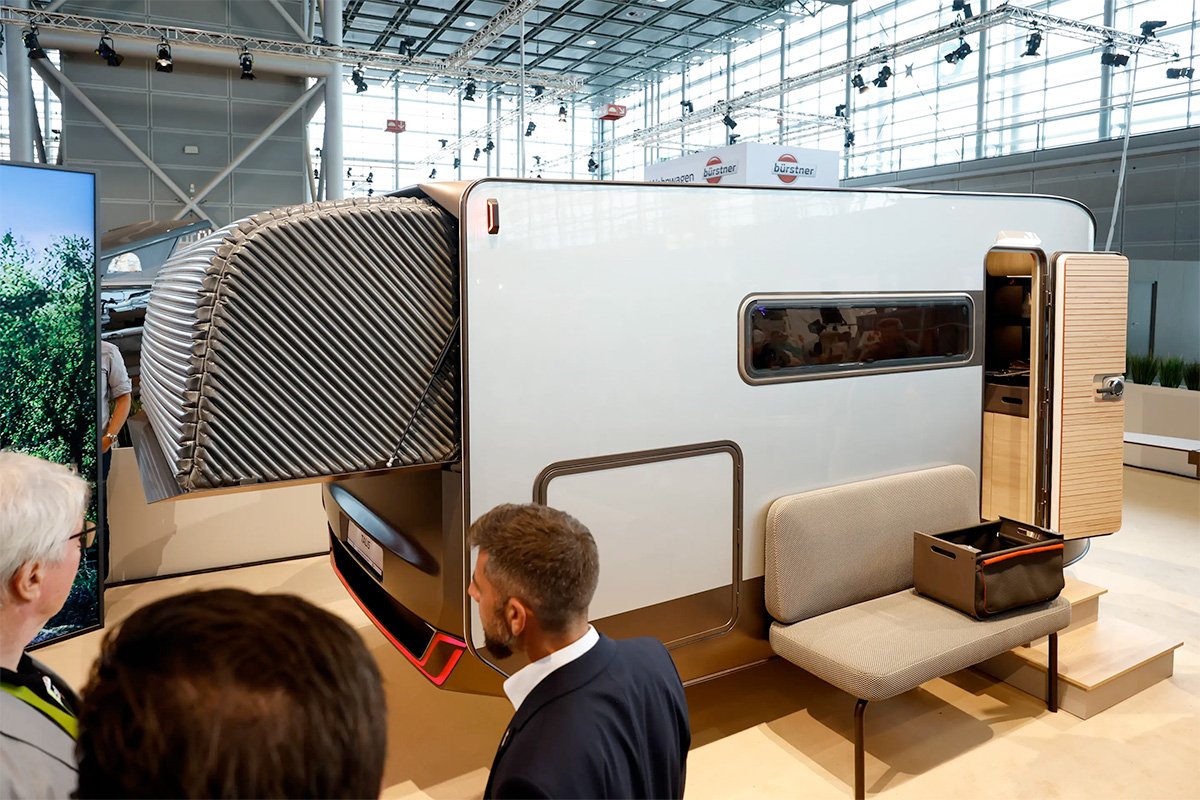
But the Talis’ space-saving design doesn’t stop there. Underneath the master bed is a hidden “kids’ sleeping den,” which converts from a storage tunnel during the day into a cozy bunk area for two children at night. This clever, fort-like space offers a sense of adventure for young campers and can be partitioned with a curtain for privacy.
Flexible living spaces: The EasyFlex concept
Bürstner’s EasyFlex design philosophy is central to the Talis, with several features that allow for adaptable, multi-functional spaces. The trailer’s compact front kitchen is a prime example. While smaller than kitchens found in larger caravans, the Talis kitchen offers a high level of flexibility. The entire upper half of the kitchen block can be removed and used outdoors, giving campers the option to cook in the open air. The cooktop, which includes two induction hobs, can be detached from the trailer and set up on a portable work surface outside, making it convenient and eliminating the need for LPG tanks.
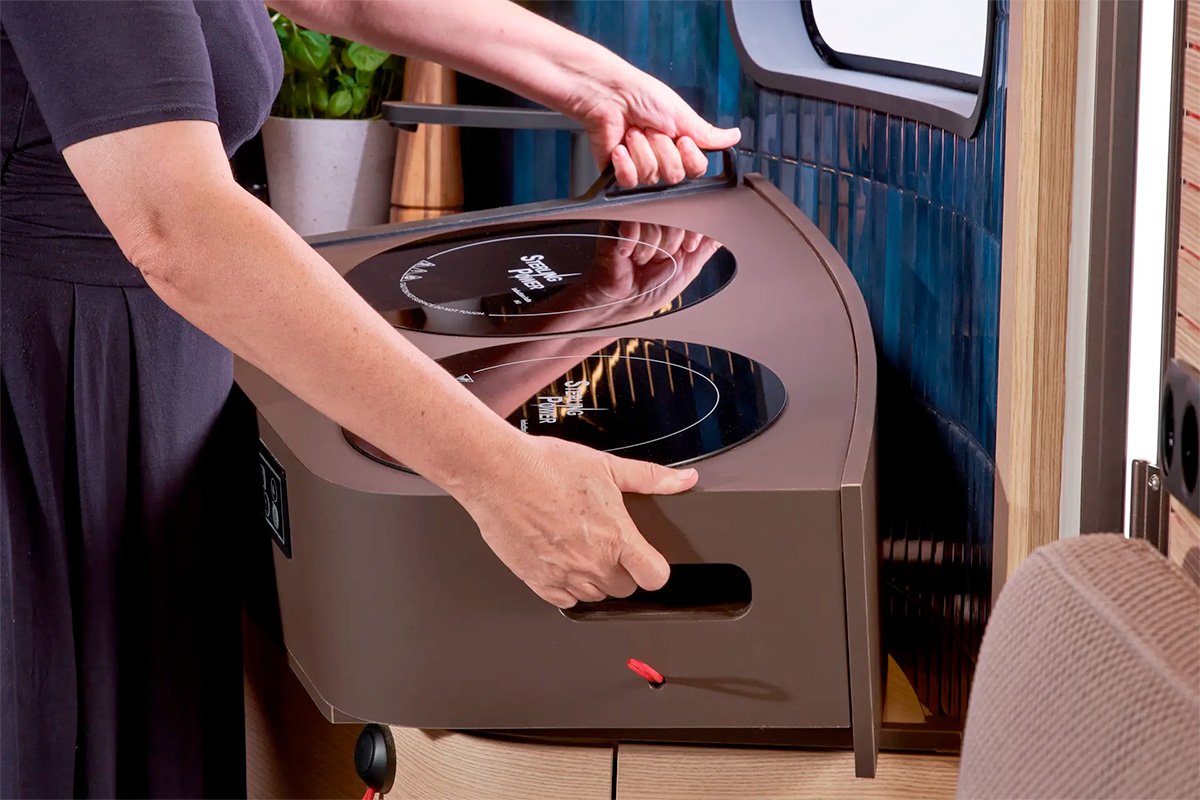
Further emphasizing outdoor living, the Talis also includes a removable sofa bench. This piece of furniture can easily be transported outside, offering additional seating for al fresco dining or simply enjoying the surroundings.
A compact but efficient wet bathroom
The EasyFlex design extends to the wet bathroom as well. Although compact, the bathroom includes a chemical-free twin-chamber eco-toilet, which can be removed when necessary. This likely dry separating toilet enhances the bathroom’s usability, freeing up space in the shower or allowing the toilet to be used in an outdoor privacy tent. In addition, the bathroom sink can fold into the wall, further increasing the available shower space. These thoughtful touches demonstrate Bürstner’s commitment to maximizing utility in every corner of the trailer.
Aesthetic and functional design elements
Beyond its adaptable spaces, the Talis impresses with its modern interior design. The trailer features slatted wood wall paneling, which not only provides a clean, contemporary look but also incorporates soundproofing for a quieter living environment. The interior lighting is similarly practical, with battery-powered lamps that can be moved throughout the trailer as needed.
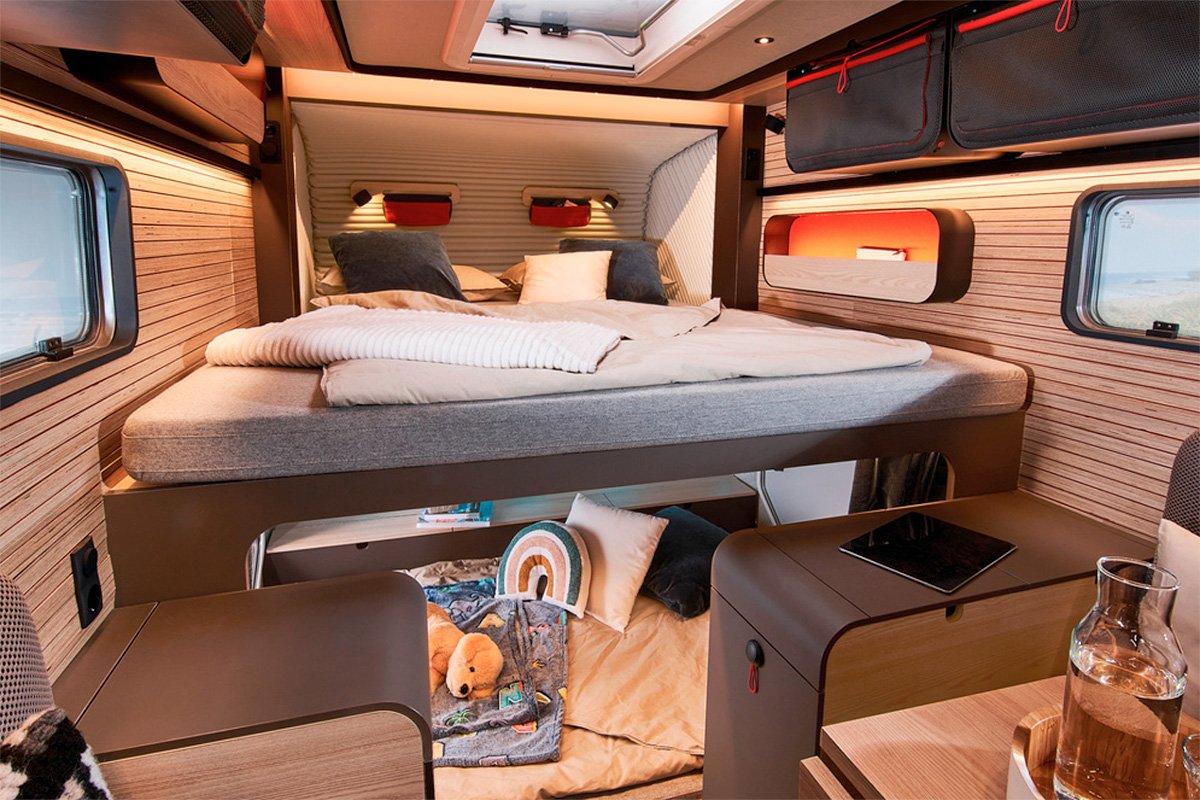
For storage, the Talis introduces soft-sided overhead compartments that can be removed and used outside the trailer or even during shopping trips. This feature adds another layer of versatility to the trailer’s design, ensuring that every element has multiple uses.
A shift toward eco-friendly RV solutions
Bürstner has been gradually shifting its focus from creating large, luxurious caravans to developing more compact, eco-friendly solutions that still offer a home-like feel. Inflatable expansion has been a key part of this transition, as seen in previous Bürstner concepts like the Lyseo motorhome and the Habiton micro-camper. The Talis continues this trend, incorporating lightweight materials and flexible spaces to reduce its environmental impact while maintaining the comfort and convenience that RV enthusiasts expect.
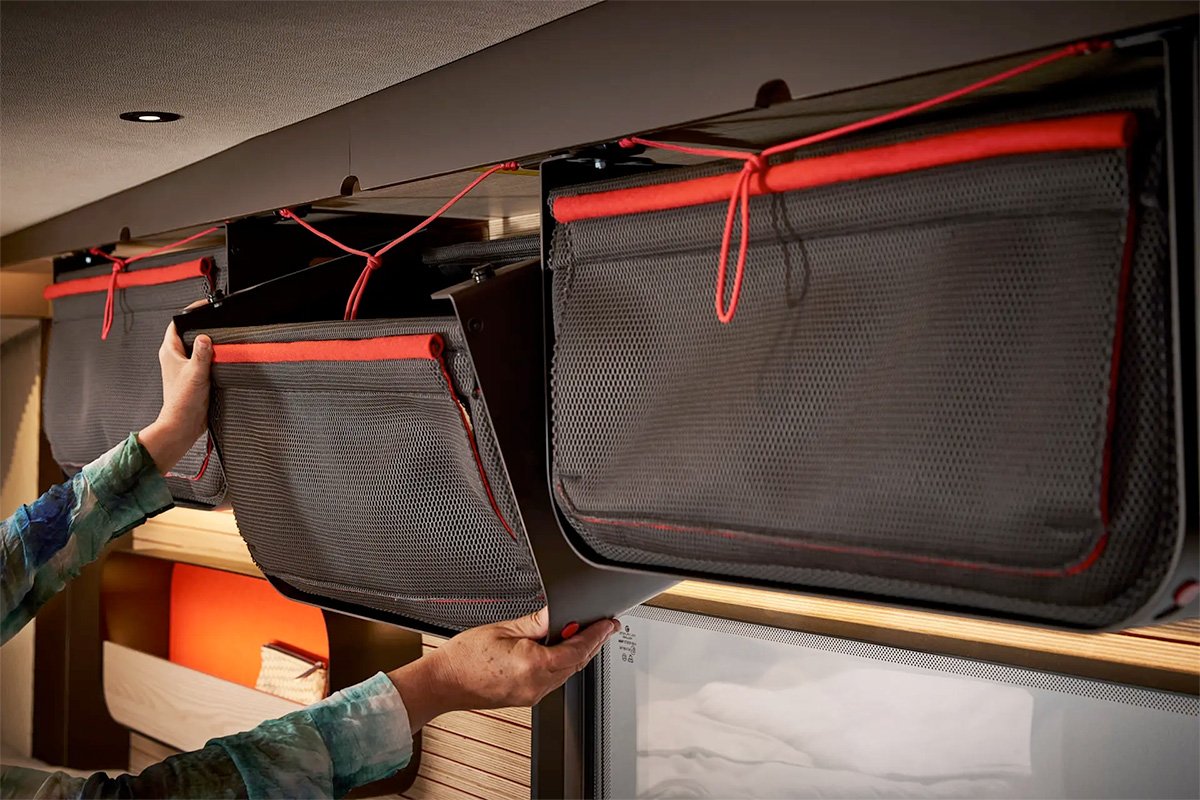
As Jens Kromer, chairman of Bürstner’s management board, explains, “Electric towing vehicles, a low fuel consumption and light construction are becoming increasingly important.” This reflects a broader industry shift toward sustainability, with RV manufacturers focusing on reducing weight and improving aerodynamics to accommodate electric vehicles and decrease fuel usage. The Talis concept fits squarely within this movement, designed to be towable by a wide range of vehicles, including electric cars.
The future of the Talis concept
While the Erwin Hymer Group has a strong track record of bringing its concept trailers to market, it remains uncertain whether the Talis will follow in the footsteps of the Lyseo and become a retail product. The Talis generated considerable buzz as one of the most innovative designs showcased at the 2024 Düsseldorf Caravan Salon, which concluded earlier this month.
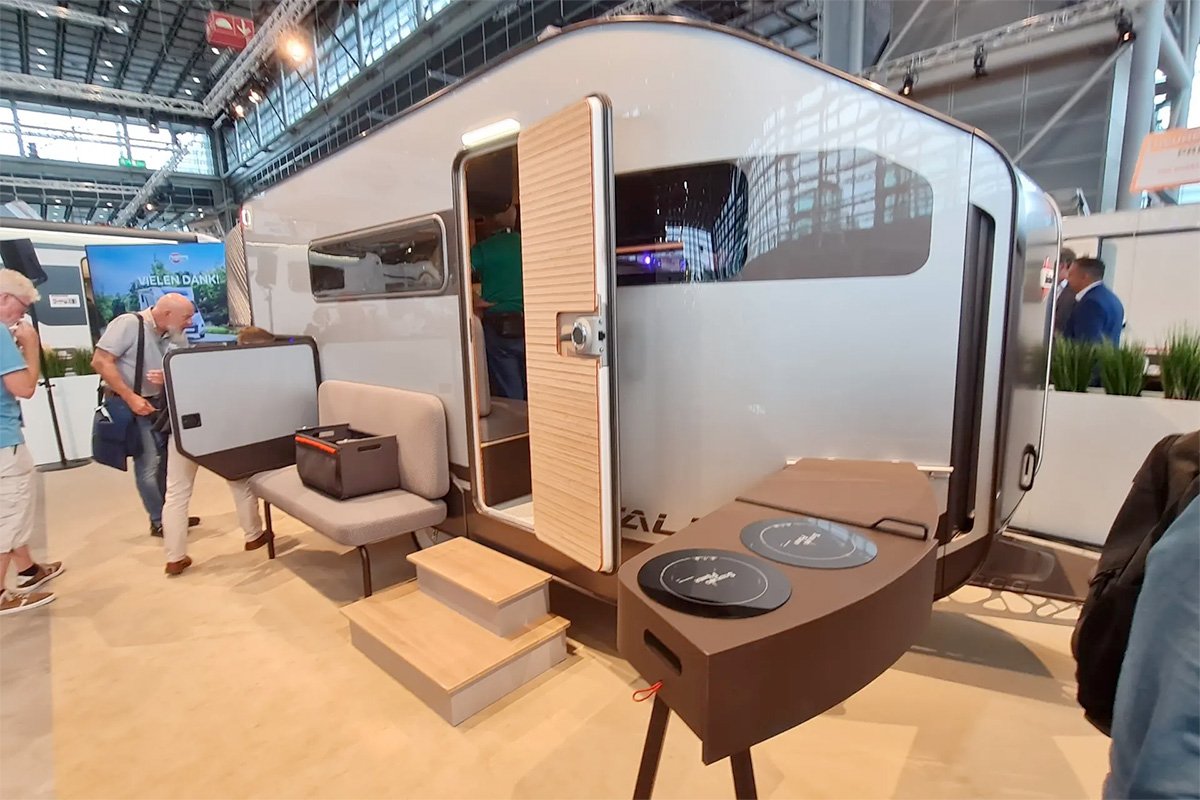
In the meantime, the Talis continues to serve as a compelling vision of what the future of trailer camping could look like—compact, eco-friendly, and highly adaptable to a wide range of camping needs.
Source: Bürstner

